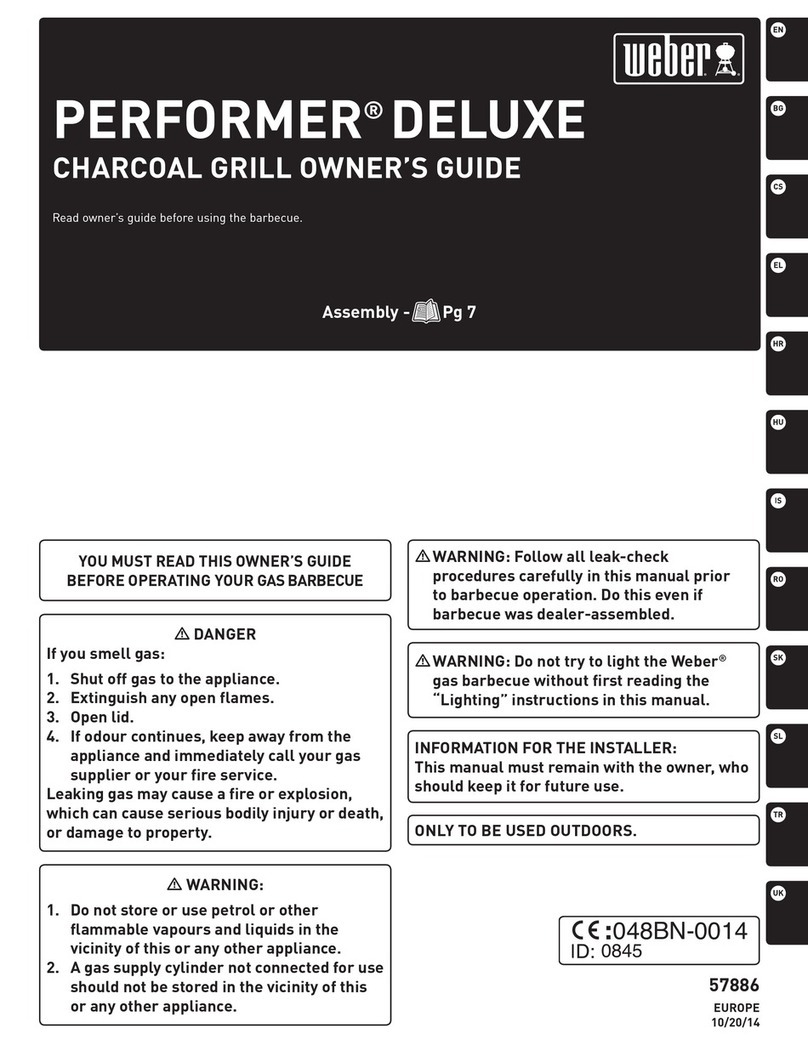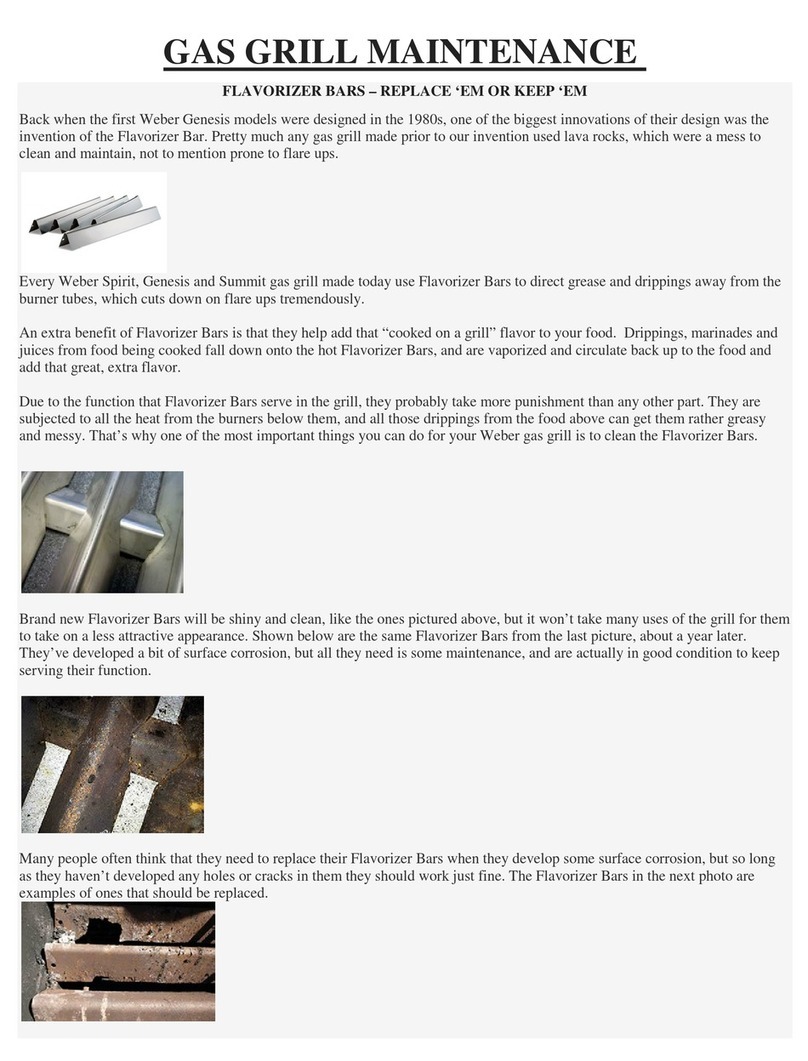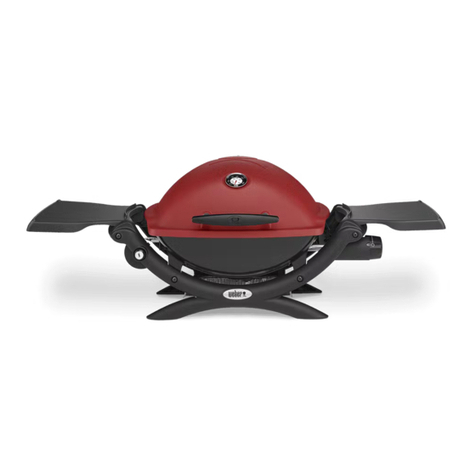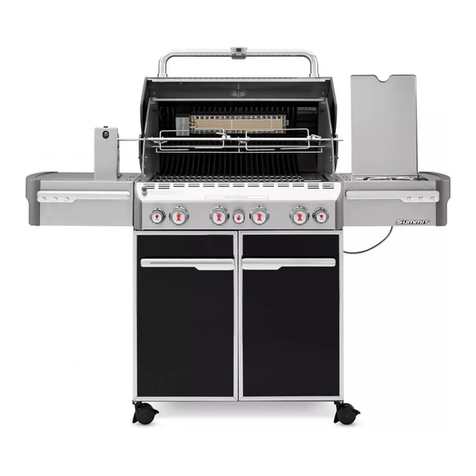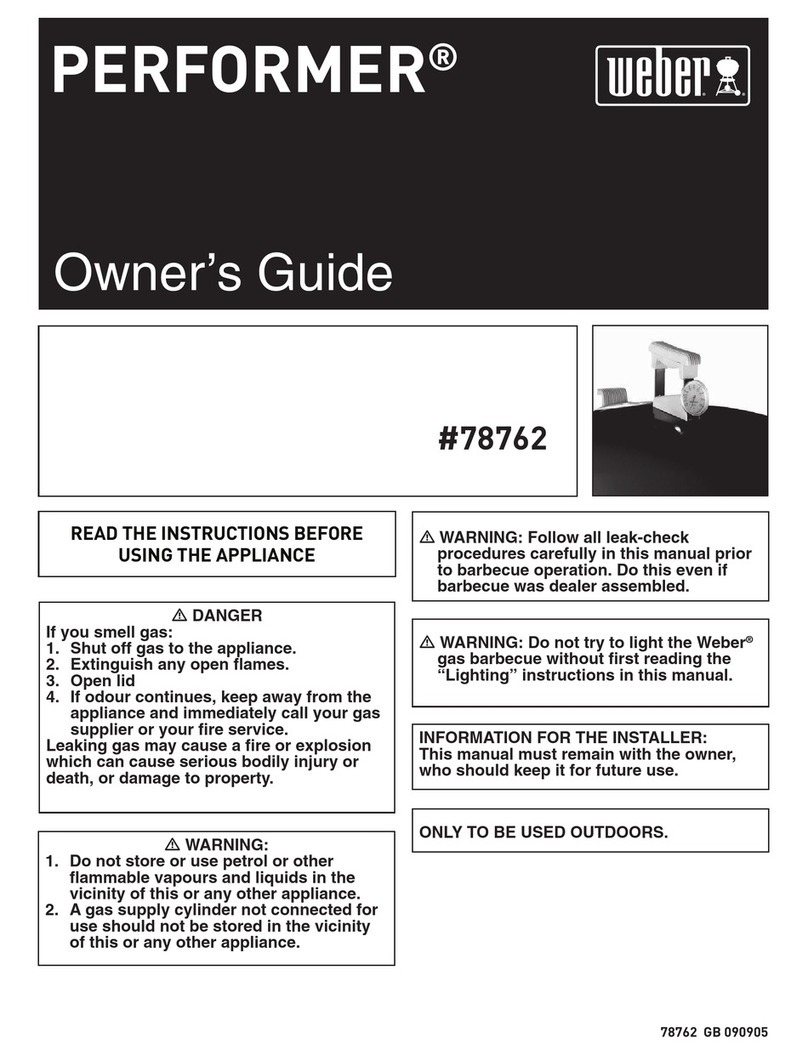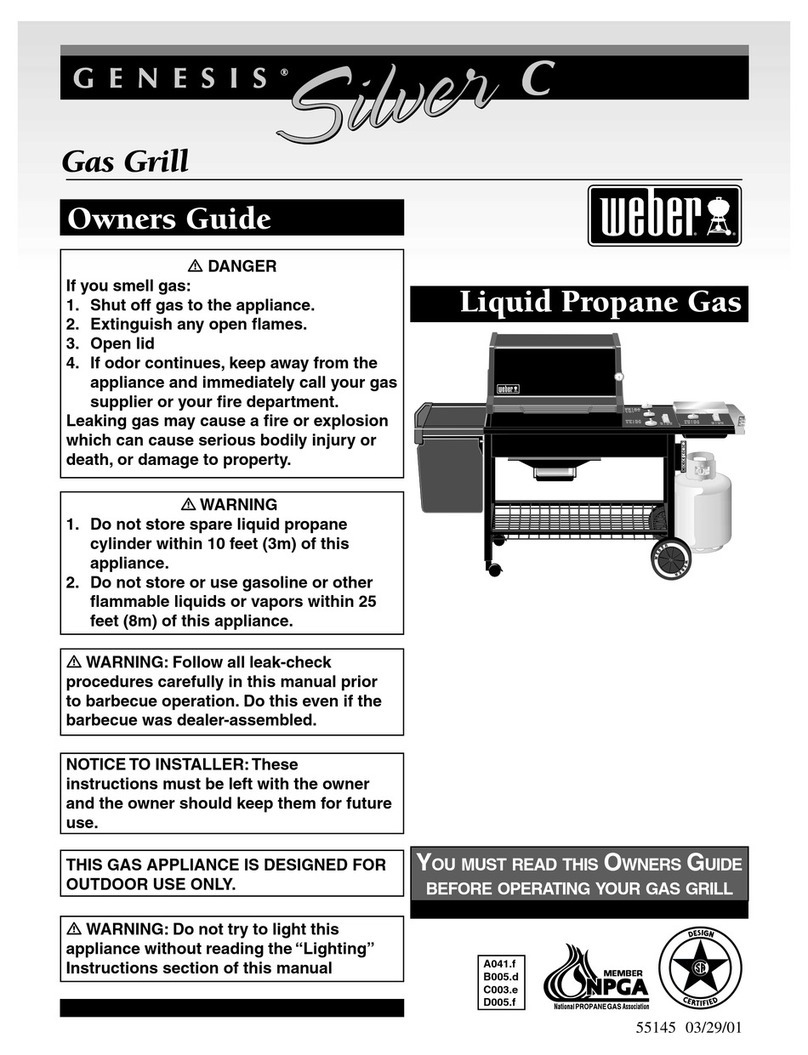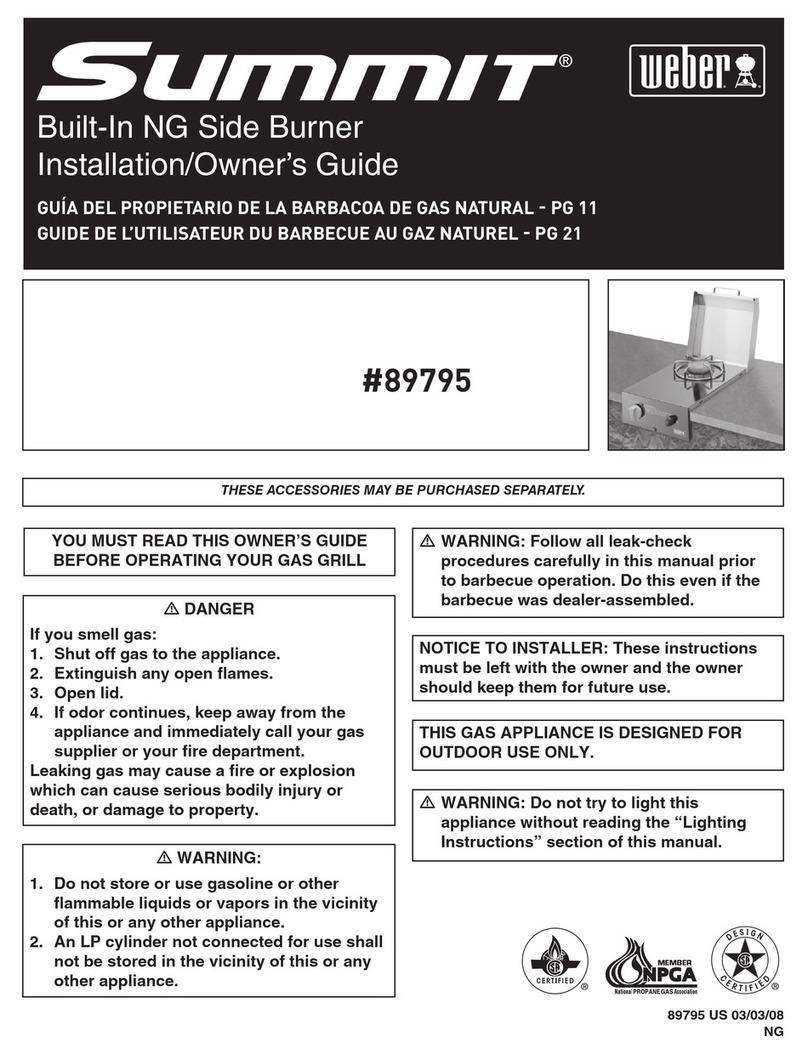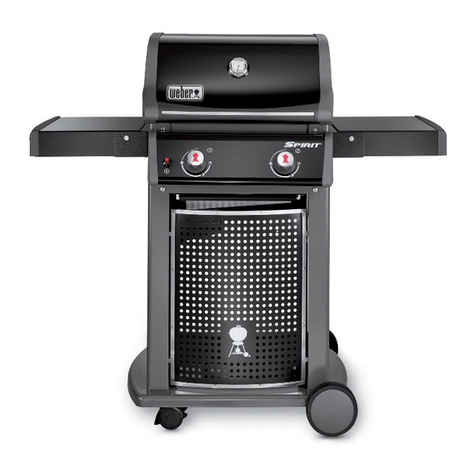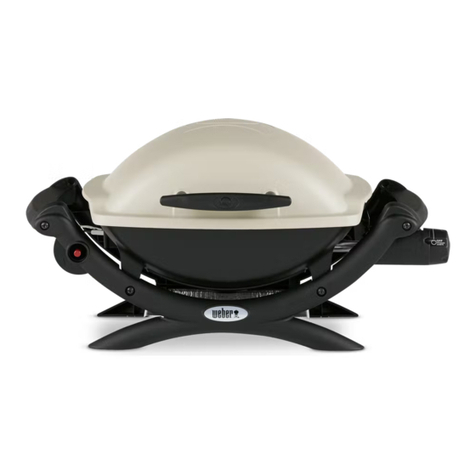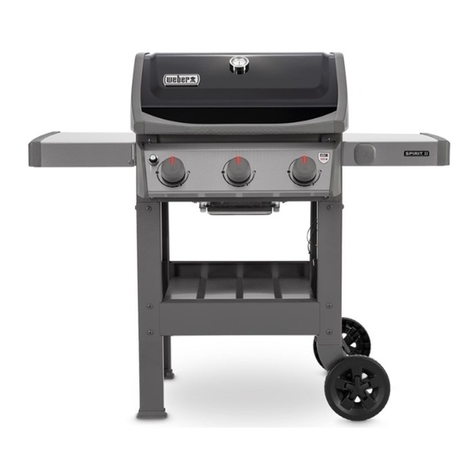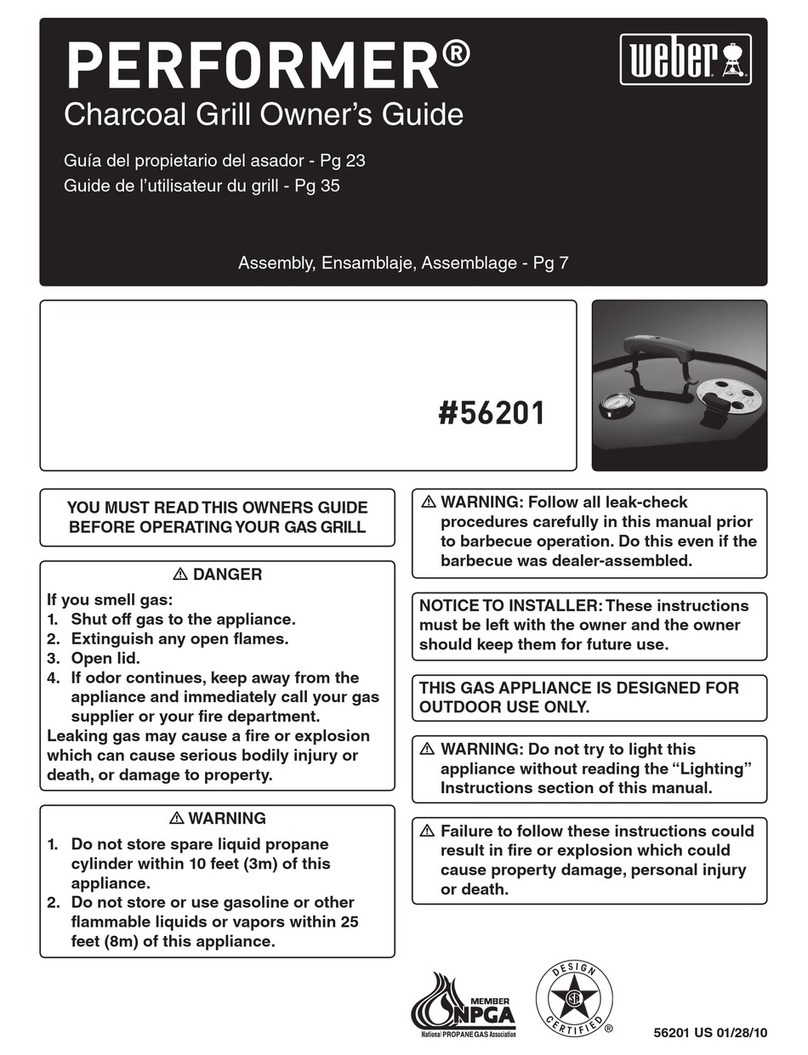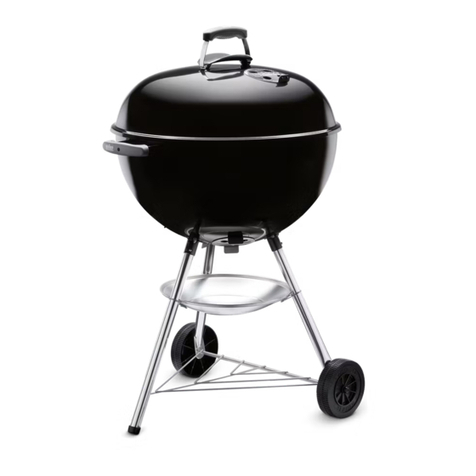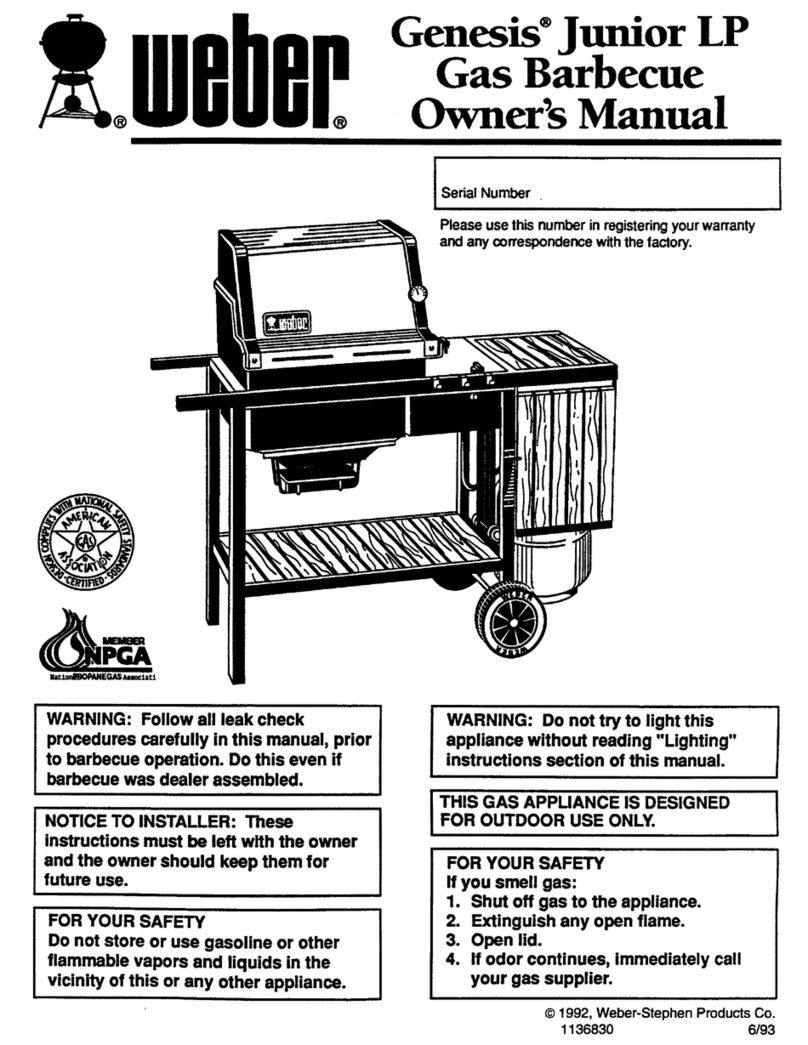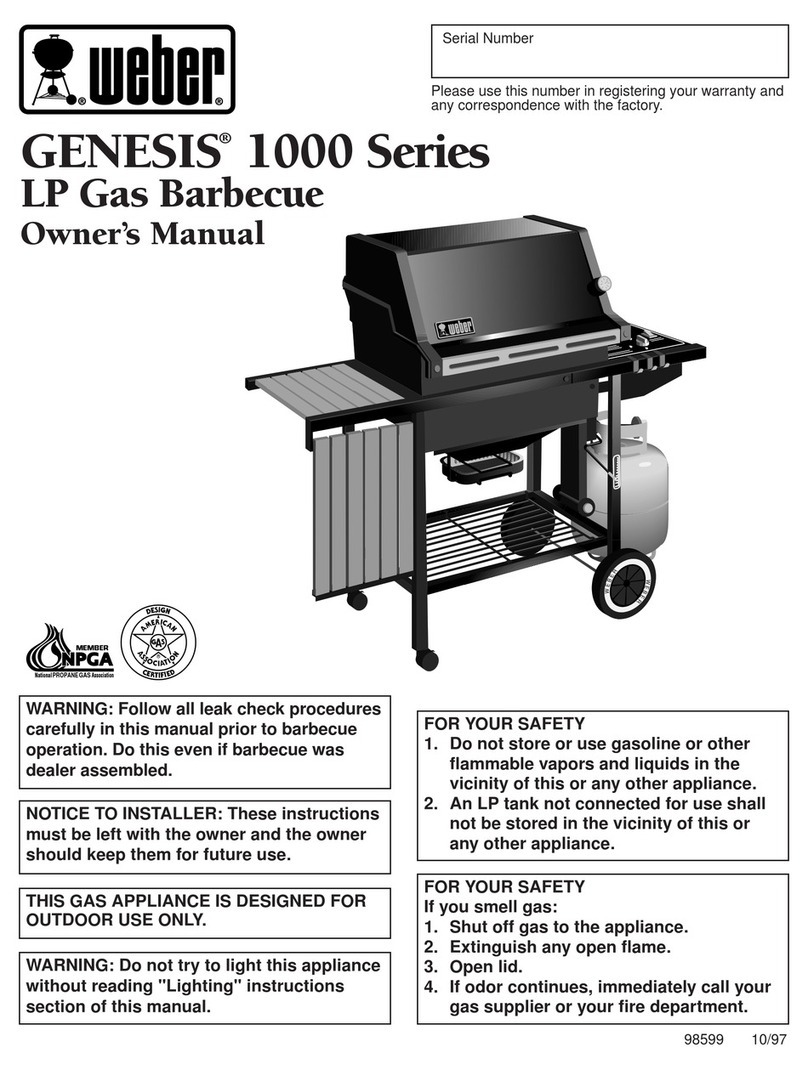3
Weber-Stephen Products Co. (Weber) hereby
warrants to the ORIGINAL PURCHASER of
this Weber Gas Barbecue that it will be free of
defects in material and workmanship from the
date of purchase as follows:
Aluminum Castings, 10 years,
Cooking Grates and Flavorizer Bars, 3 years,
All Remaining Parts, 5 years,
when assembled and operated in accordance
with the printed instructions accompanying it.
Weber may require reasonable proof of your
date of purchase. THEREFORE, YOU
SHOULD RETAIN YOUR SALES SLIP OR
INVOICE.
This Limited Warranty shall be limited to the
repair or replacement of parts which prove
defective under normal use and service and
which on examination shall indicate, to
Weber's satisfaction, they are defective.
Before returning any parts, contact Weber-
Stephen Products Co. Customer Service
Center. If Weber confirms the defect and
approves the claim, Weber will elect to replace
such parts without charge. If you are required
to return defective parts, transportation
charges must be prepaid. Weber will return
parts to the purchaser, freight or postage
prepaid.
This Limited Warranty does not cover any
failures or operating difficulties due to accident,
abuse, misuse, alteration, misapplication,
vandalism, improper installation or improper
maintenance or service, or failure to perform
normal and routine maintenance, including but
not limited to damage caused by insects within
the burner tubes, as set out in this owner's
manual.
Deterioration or damage due to severe
weather conditions such as hail, hurricanes,
earthquakes or tornadoes, discoloration due to
exposure to chemicals either directly or in the
atmosphere, is not covered by this Limited
Warranty.
There are no other express warrants except as
set forth herein and any applicable implied
warranties of merchantability and fitness are
limited in duration to the period of coverage of
this express written Limited Warranty. Some
states do not allow limitation on how long an
implied warranty lasts, so this limitation may
not apply to you.
Weber is not liable for any special, indirect or
consequential damages. Some states do not
allow the exclusion or limitation of incidental or
consequential damages, so this limitation or
exclusion may not apply to you.
Weber does not authorize any person or
company to assume for it any other obligation
or liability in connection with the sale,
installation, use, removal, return, or
replacement of its equipment; and no such
representations are binding on Weber.
This Warranty applies only to products sold at
retail.
WEBER-STEPHEN PRODUCTS CO.
Customer Service Center
250 South Hicks Road
Palatine, IL 60067-6241
(708) 705-8660
(800) 446-1071
LP Tank
The LP tank manufacturer is responsible for the
materials, workmanship and performance of the tank.
If the tank has a defect, malfunctions, or you have a
question regarding the tank, call the tank manufac-
turer's customer service center. The phone number is
on the warning decal which is permanently attached
to the tank. If the tank manufacturer has not resolved
the issue to your satisfaction, then call Weber-
Stephen Products Co., Customer Service Center.
WARRANTY
